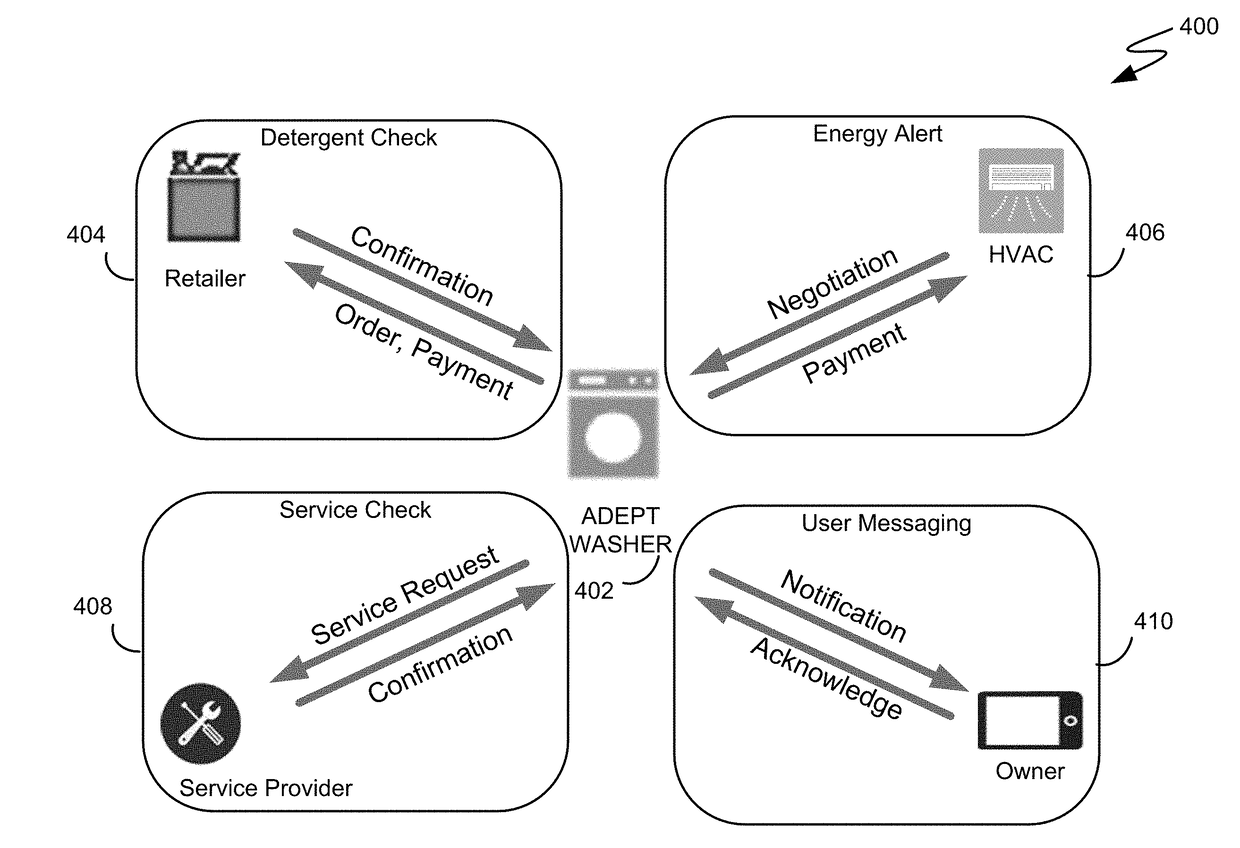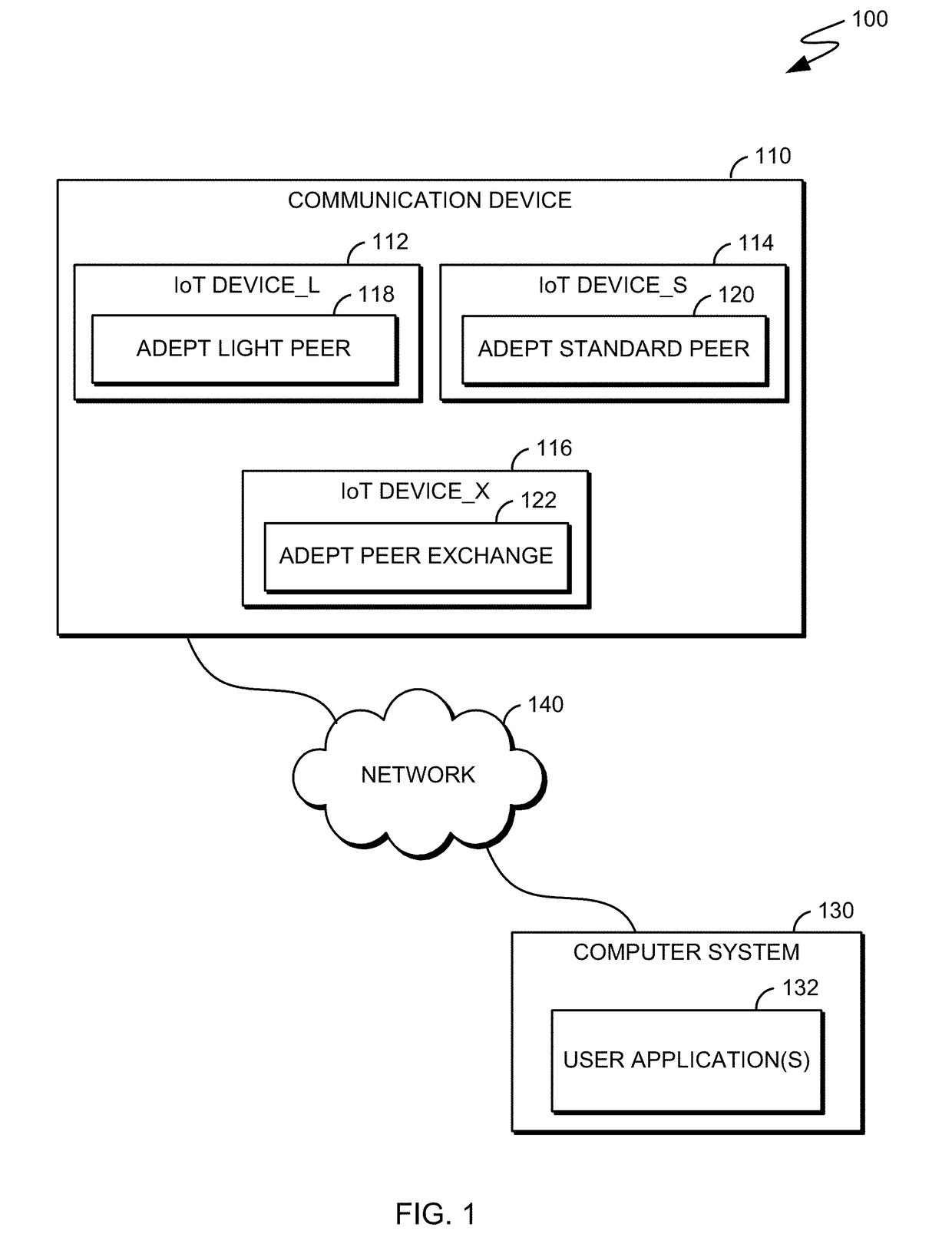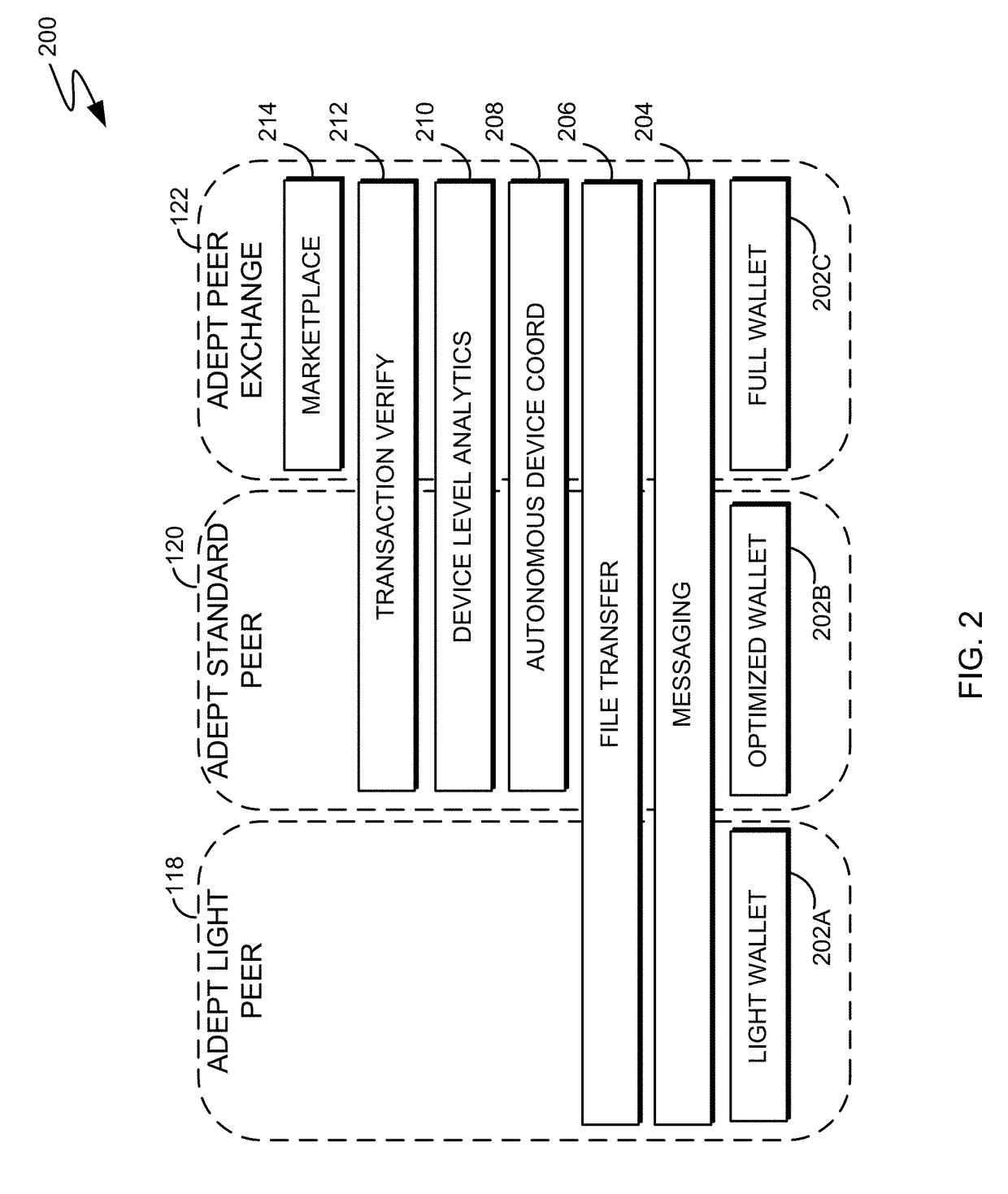Device self-servicing in an autonomous decentralized peer-to-peer environment
- Summary
- Abstract
- Description
- Claims
- Application Information
AI Technical Summary
Benefits of technology
Problems solved by technology
Method used
Image
Examples
Embodiment Construction
[0014]Aspects of the present disclosure and certain features, advantages and details thereof, are explained more fully below with reference to the non-limiting examples illustrated in the accompanying figures. Descriptions of well-known materials, fabrication tools, processing techniques, etc., are omitted to avoid obscuring the disclosure with unnecessary detail. It should be understood, however, that the detailed description and the specific examples, while indicating aspects of the invention, are given by way of illustration only and not by way of limitation. Various substitutions, modifications, additions and / or arrangements, within the spirit and / or scope of the underlying inventive concepts will be apparent to those skilled in the art from this disclosure.
[0015]Embodiments of the present invention provide systems, methods, and computer program products by which IoT devices can engage in device controlled self-servicing based on foundational IoT trusted transactions in a peer-t...
PUM
 Login to View More
Login to View More Abstract
Description
Claims
Application Information
 Login to View More
Login to View More - R&D
- Intellectual Property
- Life Sciences
- Materials
- Tech Scout
- Unparalleled Data Quality
- Higher Quality Content
- 60% Fewer Hallucinations
Browse by: Latest US Patents, China's latest patents, Technical Efficacy Thesaurus, Application Domain, Technology Topic, Popular Technical Reports.
© 2025 PatSnap. All rights reserved.Legal|Privacy policy|Modern Slavery Act Transparency Statement|Sitemap|About US| Contact US: help@patsnap.com



